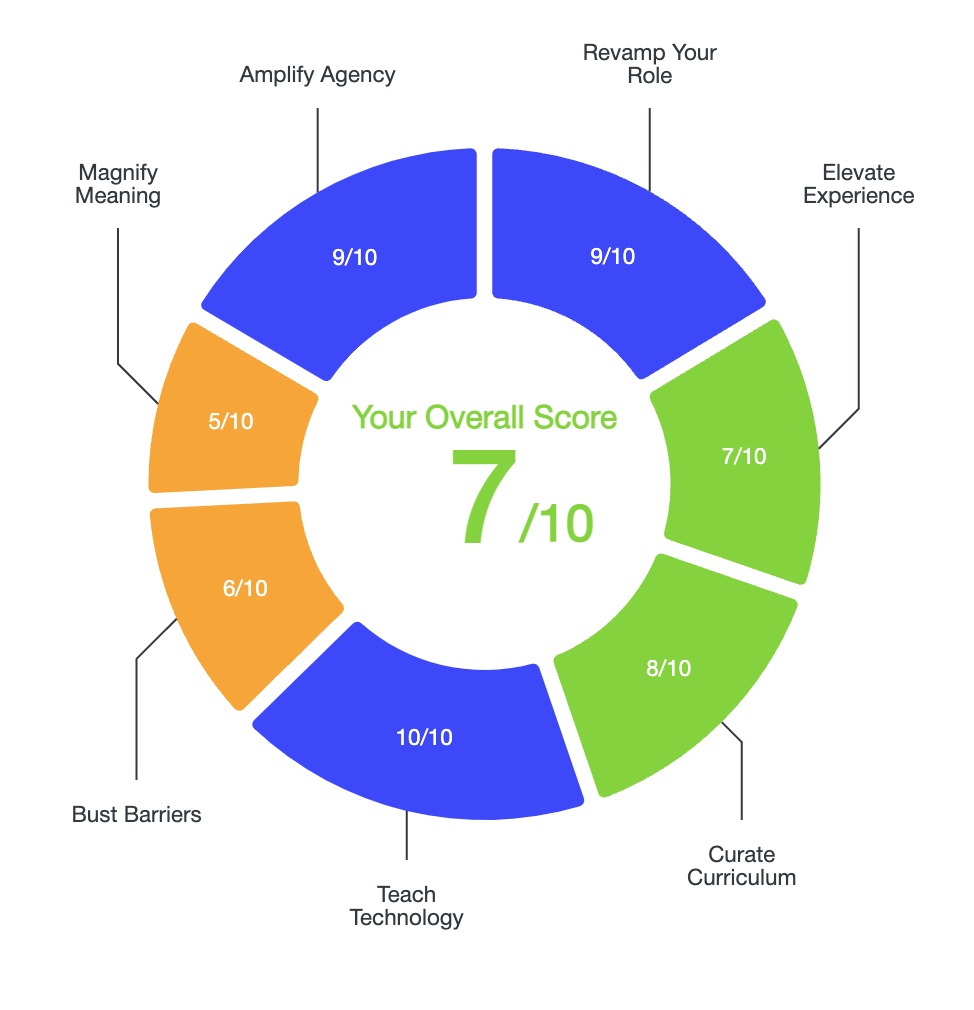Parent teacher conferences are an important time to build relationships with families, communicate current progress, and set goals for the future. In practice, though, they can be hard to execute. Without a clear plan, it’s pretty much guaranteed the conference will mostly involve adults discussing how a student should approach their education. It took me years of trial and error to figure out how to run effective parent teacher conferences. Here’s how I use data and technology to do it:
Students Should Be Present and Should Contribute
I’m a strong believer in bringing including student voice in parent teacher conferences. Including students is critical because it puts students in the driver’s seat and sets them on a path to take ownership over their own learning. Of course, purposeful student contributions in conferences requires some pre-planning and prep work in class.
My approach to student participation is informed by Ron Berger’s Leaders of Their Own Learning. Berger argues for building student efficacy through developing awareness of their current levels, setting goals, and tracking progress toward goals.
Ground the Conversation in Data
Grounding parent teacher conferences in data ensures that academic achievement and student-efficacy remains front-and-center.
Prior to conferences I prepare students by having them reflect on and set goals based on:
- diagnostic assessments
- formative assessments
- project-based work that shows progress toward learning targets.
In my class, we use MAP as a diagnostic. Students measure ongoing reading progress with Newsela’s Pro Binder. We also use Seesaw to keep project based work in digital portfolios.
First, students reflect on their readi level based on a diagnostic reading assessment such as MAP, Reading A-Z, DRA. Creating the analysis and reflection in Google Docs also allows students to easily share their work with parents/guardians.
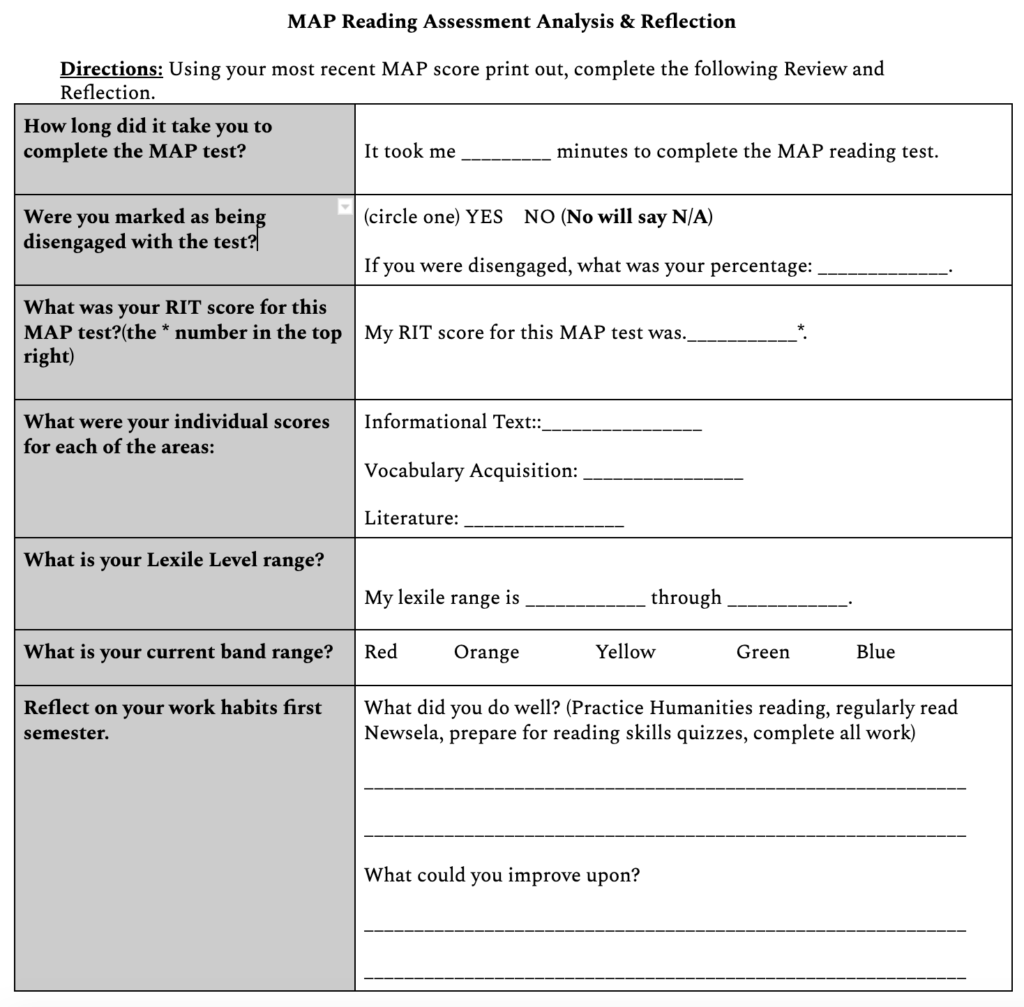
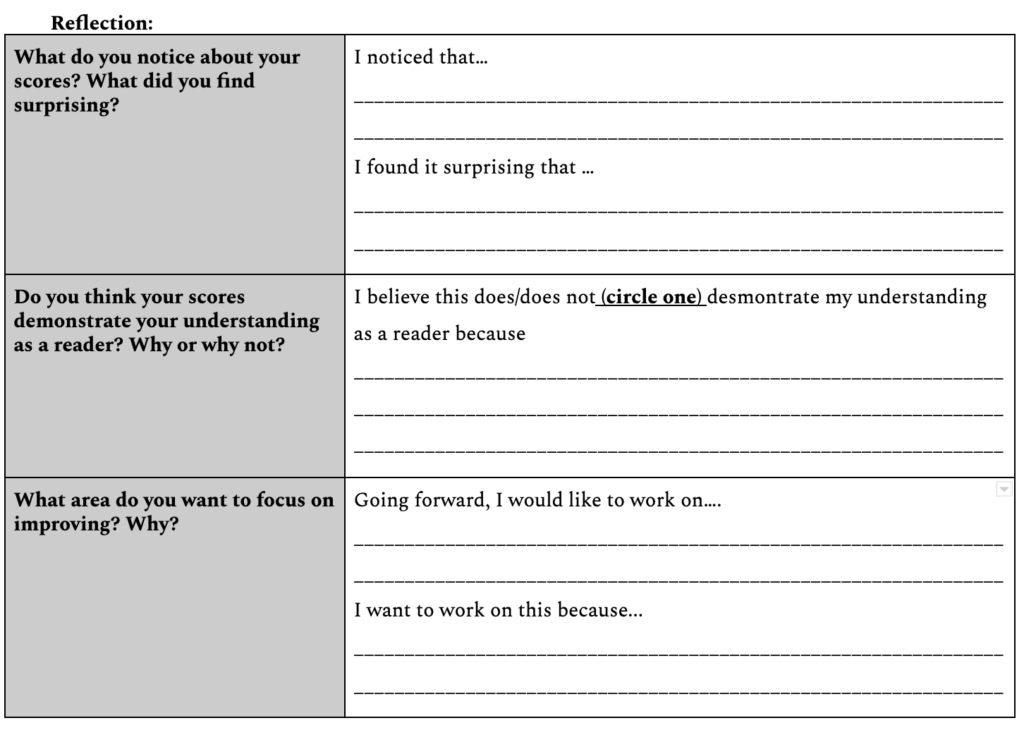
Next, students analyze and reflect on their ongoing reading data as measured by Lexile level in Newsela’s binder feature (Available to Pro Subscribers).
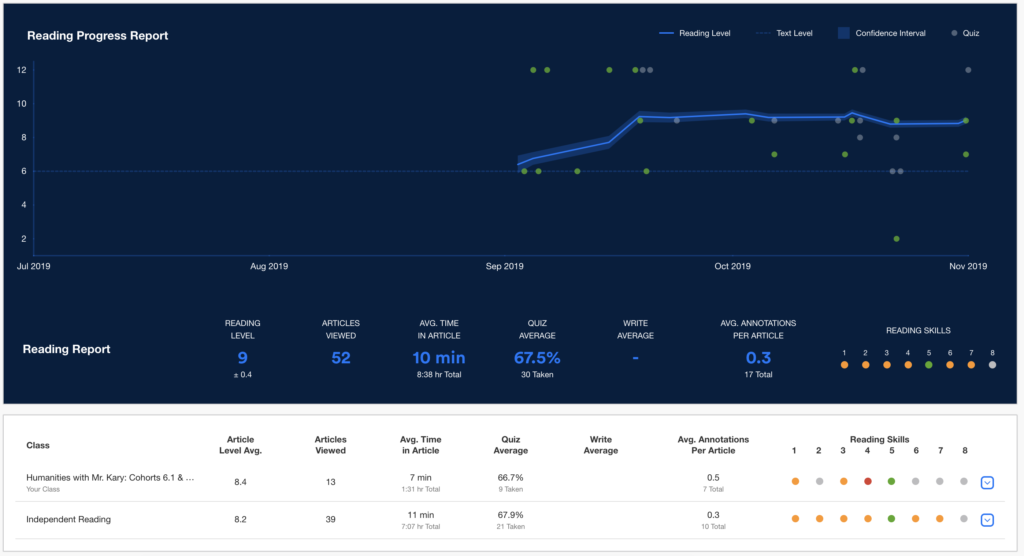
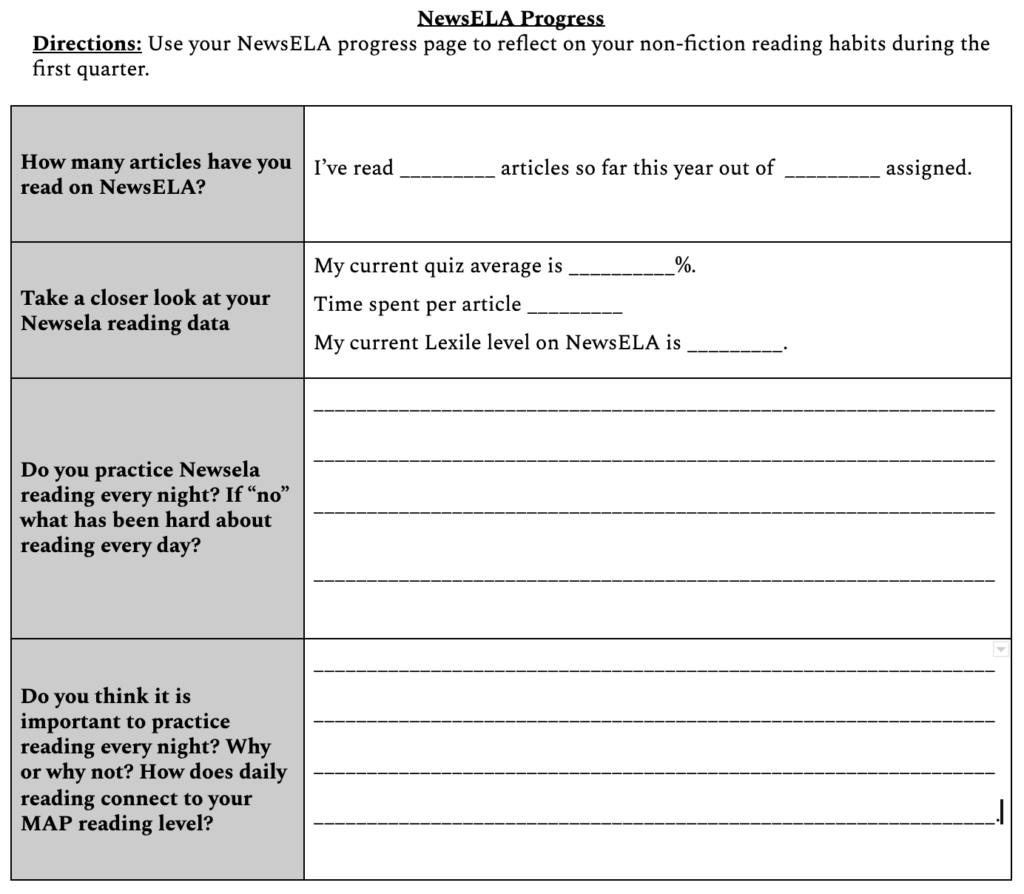
Throughout the year, students also track their Lexile growth on Newsela using Google Sheets.
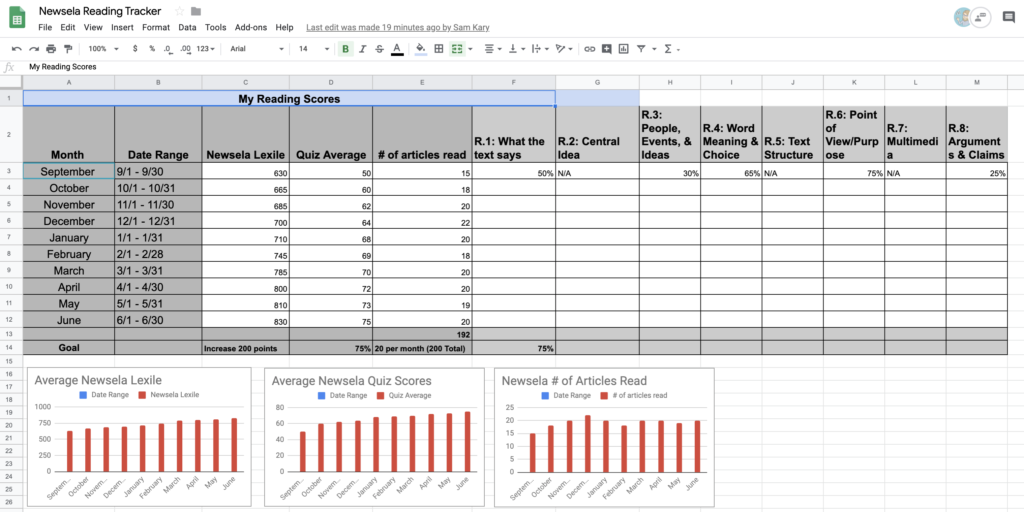
Then, students select project-based work to upload into their digital portfolio with Seesaw. After uploading work, students use the annotation tools in Seesaw to reflect on how their assignment shows progress toward learning targets that tie back to the bigger picture reading goal. 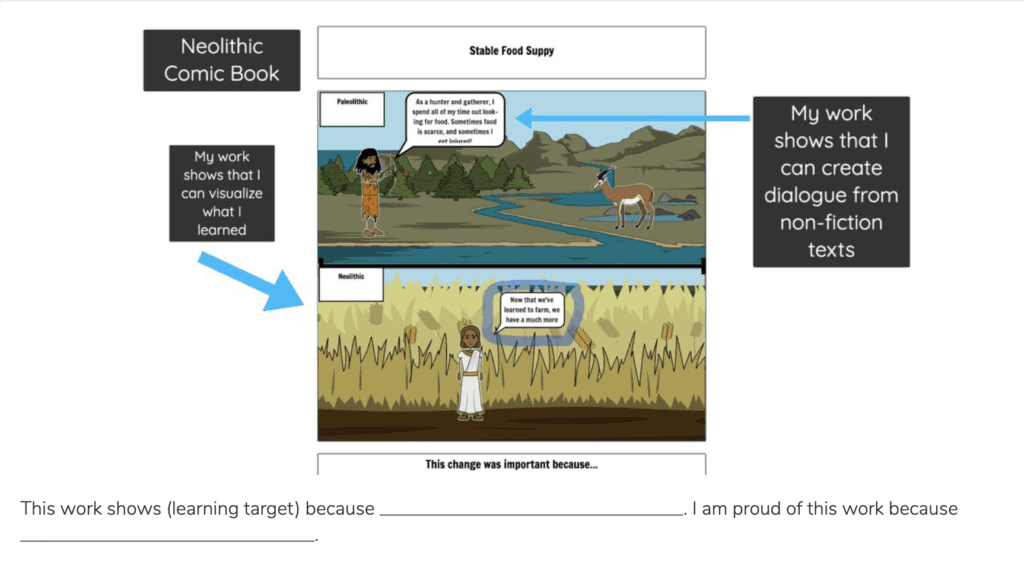
Lastly, students set SMART goals based on their reflections that they will share at conferences.
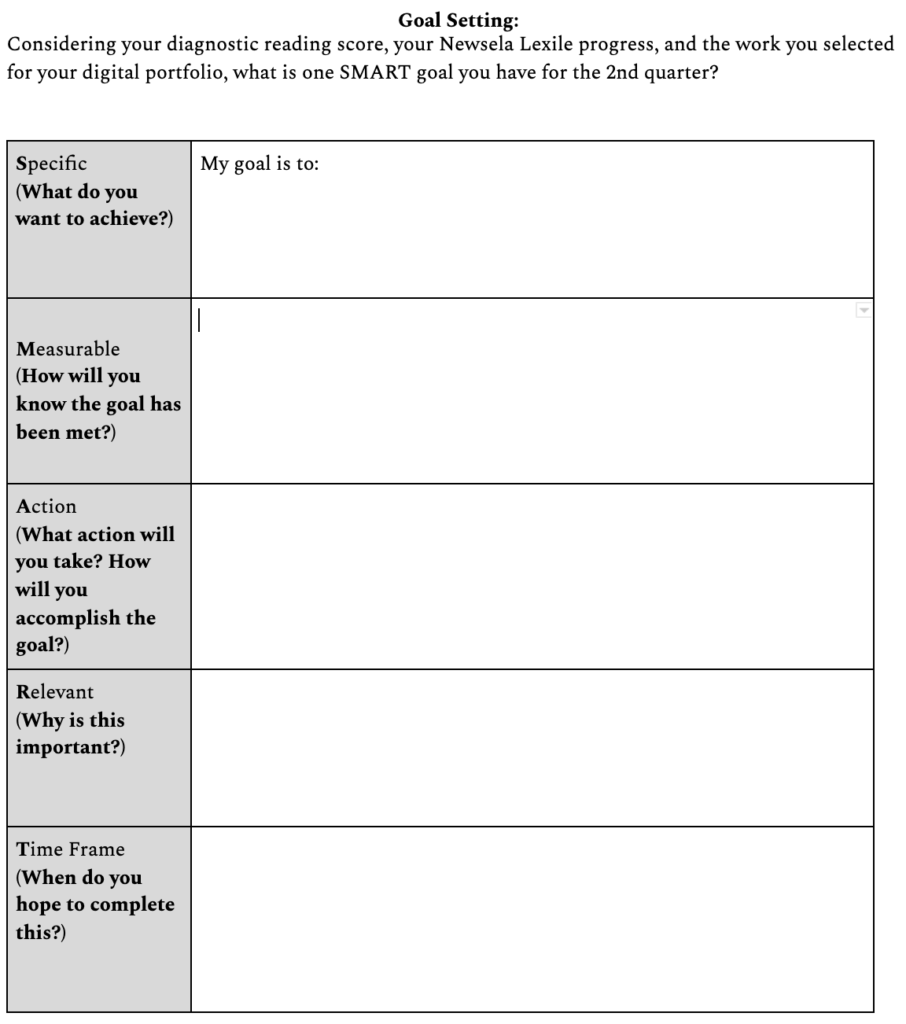
It doesn’t matter exactly what data or assignments students reflect on. What’s important is that students understand their current levels, set goals based on those levels, and use tracking systems to monitor them.
Running the Conference
Prior to beginning a parent teacher conference, I create an agenda. Then, during the conference I use a timer to ensure we are on track. My agenda looks something like this:
- Introductions
- Student shares current levels and showcases work
- SMART goal
- Questions
I begin each conference by going over the agenda and asking parents if it sounds okay. I ask them if there was anything else they were hoping to discuss, and ensure that there will be time for questions at the end.
First, students present their data and reflections, showcase their work, and set a SMART goal. Then, I take advantage of the opportunity to sign parents up for their student’s Seesaw account and to link them to their student’s data trackers so they can monitor their progress.
One of the great benefits of using technology to track academic data is the fact that it extends the conference beyond the confines of an in-person meeting. Once a family is looped into the technology programs students use to showcase work, track data, and reflect, they can access those tools throughout the entire year.
Of course some circumstances merit veering from the agenda, but for at least 90% of my conferences, I stick to the plan.
Parents and guardians consistently appreciate hearing directly from their students how they are doing in school. They are often amazed at their child’s ability to reflect on their progress and to set meaningful goals moving forward.
Conclusion
The positive impact of running an effective parent teacher conference lasts far beyond one short meeting, and has the power to transform a student’s relationship with their own learning.
For additional strategies for increasing autonomy, creativity, engagement, and academic rigor with technology, click here:
How to Use Education Technology: The Ultimate Guide
And to read more about why I believe technology must be a central part of public education today, click here:

